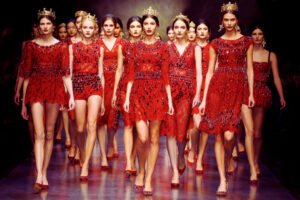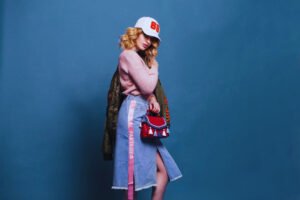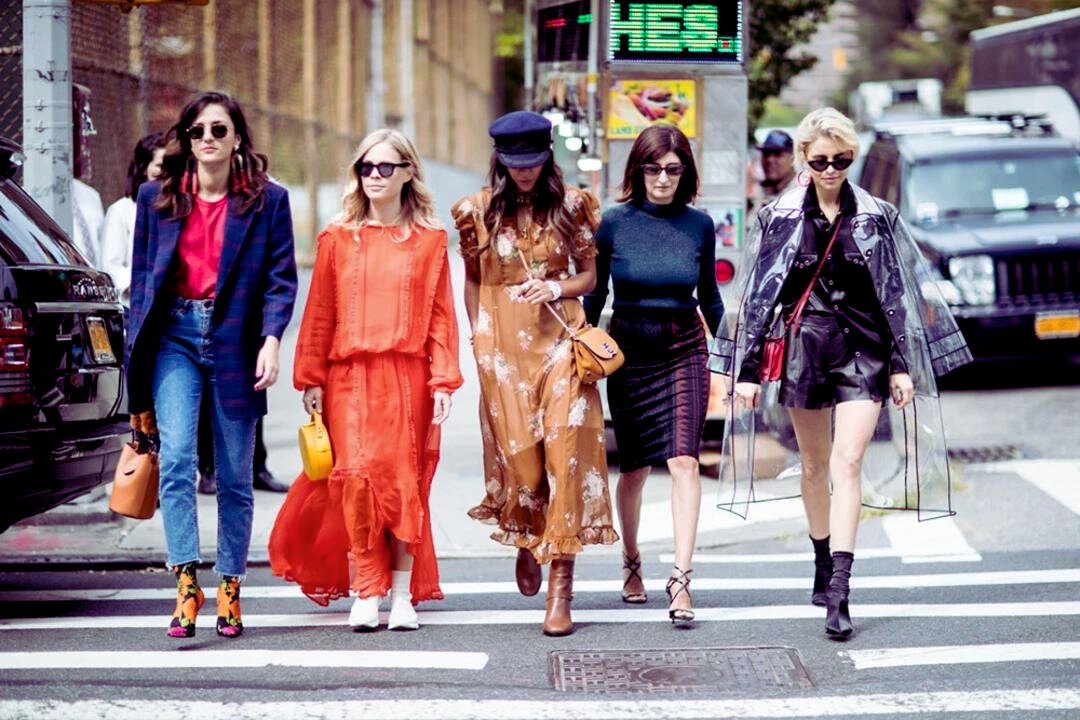Fashion Trends Dictate What You Should Wear: Challenging the Notion
In the present speedy world, style appear to direct what we wear, affecting our decisions and inclinations. Notwithstanding, it’s fundamental for question whether aimlessly pursuing these directions is genuinely important or even useful. This article dives into the intricacies of style, testing the thought that they ought to direct our closet decisions.

Fashion History
Design history is a rich embroidery woven with strings of development, imagination, and social articulation. Across hundreds of years and landmasses, clothing has filled in as something beyond a method for covering the body; it has been an impression of society’s qualities, goals, and standards.
In old civic establishments, for example, old Egypt and Mesopotamia, clothing was complicatedly woven into strict ceremonies and cultural progressive systems. The articles of clothing worn by pharaohs and ministers represented divine power, while the average folks embellished themselves with more straightforward clothing fit to their regular routines.
As civilizations prospered and shipping lanes extended, design turned into a method for social trade and articulation. The Silk Street, extending from China to the Mediterranean, worked with the trading of silk, flavors, and thoughts, forming style across landmasses. From the resplendent robes of Chinese heads to the lavish materials of the Byzantine Realm, every locale added to the embroidery of worldwide style.
The Renaissance period denoted a resurrection of workmanship, culture, and design in Europe. Enlivened by traditional goals of magnificence and extent, Renaissance design embraced plushness and lavishness. Men wore doublets and hose embellished with complex weaving, while ladies wore elaborate outfits with voluminous skirts and tight bodices. The ascent of the print machine empowered design plates and magazines to scatter the furthest down the line patterns to a more extensive crowd, energizing interest for extravagance products.
The Modern Transformation achieved significant changes in the style business, changing the creation and conveyance of dress. Large scale manufacturing methods reformed material assembling, making stylish pieces of clothing more available to the majority. The development of the sewing machine additionally sped up the speed of style, permitting originators to make perplexing plans with more prominent speed and accuracy.
Key Designers and Brands
Powerful creators and brands assume a huge part in forming style. Symbols like Coco Chanel, Yves Holy person Laurent, and Gianni Versace have made a permanent imprint on the business with their imaginative plans and visionary manifestations. Their commitments proceed to rouse and impact contemporary design.
Besides, the impact of key planners and brands reaches out past their singular manifestations to shape whole design developments and social patterns. For instance, Chanel’s notorious tweed suits and minimal dark dresses have become immortal images of class and refinement, while Yves Holy person Laurent’s spearheading plans tested customary ideas of gentility and upset womenswear.
Besides, contemporary architects and brands keep on expanding upon the traditions of these style pioneers, pushing limits and rethinking the scene of the business. From extravagance style houses like Gucci and Louis Vuitton to arising marks and free creators, each adds to the rich embroidered artwork of design with their interesting points of view and imaginative methodologies.
As well as molding stylish patterns, key originators and brands likewise assume a critical part in driving discussions around manageability, variety, and inclusivity in the design business. Numerous planners are progressively consolidating moral and eco-accommodating practices into their creation processes, while others are supporting variety and portrayal on the runway and in promoting efforts.
Eventually, the impact of key planners and brands in design is a demonstration of the force of imagination, development, and vision in molding social stories and forming the manner in which we dress and communicate our thoughts. As we keep on commending the commitments of over a significant time span style symbols, we likewise anticipate the eventual fate of the business, directed by standards of supportability, inclusivity, and imagination.
Fashion Shows and Events
Style shows and occasions address something beyond a showcase of dress; they are intricate displays that commend innovativeness, development, and the creativity of plan. These occasions act as social standards, forming our view of excellence, style, and character.
The charm of design shows lies in their capacity to ship crowds into a universe of imagination and creative mind. From the luxurious sets to the astonishing lighting and music, each part of the show is cautiously arranged to bring out feeling and enthrall the faculties. Creators frequently draw motivation from a horde of sources, going from workmanship and engineering to nature and mainstream society, to make vivid encounters that rise above simple design.
The runway fills in as a phase where planners can feature their most recent assortments to a crowd of people of industry insiders, big names, and style lovers. Each piece of clothing is carefully created and styled flawlessly, mirroring the creator’s one of a kind vision and stylish. Models swagger down the catwalk with certainty and balance, exemplifying the soul of the assortment and rejuvenating it before the eyes of onlookers.
Trend Analysis
Style are not only transitory trends; they are impressions of cultural mentalities, social developments, and individual articulation. Dissecting latest things requires a multi-layered approach that considers various variables, from monetary circumstances to innovative progressions.
One of the essential wellsprings of style is road style, where regular individuals become accidental innovators through their own design decisions. Road style photography has turned into an omnipresent presence during design weeks and occasions, catching the varied blend of styles tracked down in metropolitan bases on the world. Design devotees focus on road style for motivation, noticing how people innovatively blend and match pieces of clothing to make interesting looks that resist ordinary standards.
Online entertainment forces to be reckoned with assume a huge part in molding style, employing gigantic impact over their supporters through organized content and optimistic ways of life. Stages like Instagram, TikTok, and YouTube have become virtual runways where forces to be reckoned with grandstand their outfits, cosmetics instructional exercises, and shopping takes to a large number of devotees. These powerhouses have the ability to launch dark brands into the spotlight and promote specialty patterns with their underwriting.
VIP supports have for quite some time been a main thrust behind style, with VIPs frequently filling in as style symbols for their armies of fans. Honorary pathway appearances, paparazzi shots, and virtual entertainment posts highlighting superstar outfits can ignite a free for all of interest specifically pieces of clothing or brands. Style fashioners frequently team up with big names to make selective assortments or support their items, utilizing their star ability to contact a more extensive crowd.
FAQ’s
FAQ’S
Q1: Do fashion trends truly dictate what people wear?
A1While style positively affect shopper decisions, they don’t be guaranteed to direct what people ought to wear. Design is eventually a type of self-articulation, and individual style ought to outweigh short lived patterns. Notwithstanding, it’s fundamental to perceive that cultural tensions and media impact can now and again make it trying to oppose the appeal of the most stylish trend crazes. Hence, finding some kind of harmony between remaining current with patterns and remaining consistent with one’s exceptional style is critical to exploring the steadily changing scene of design.
Q2: What factors contribute to the emergence of fashion trends?
A2: Style can come from different sources, including social developments, verifiable references, superstar supports, and virtual entertainment impacts. Drifts frequently reflect more extensive cultural perspectives and values, as well as individual longings for oddity and self-articulation. Furthermore, the style business itself, including planners, design houses, and powerhouses, assumes a huge part in forming and advancing patterns through runway shows, publicizing efforts, and joint efforts.
Q3: How do fashion trends evolve over time?
A3 Style are continually developing, impacted by evolving tastes, innovative progressions, and worldwide occasions. What’s viewed as elegant today might be obsolete tomorrow, featuring the vaporous idea of patterns. Drifts frequently cycle all through prevalence, with past styles being reconsidered and once again introduced to suit contemporary preferences. Moreover, cultural movements and social developments can start recent fads or resuscitate one of a kind style, further adding to the unique idea of design.
Q4: Are there risks associated with blindly following fashion trends?
A4: Indeed, indiscriminately pursuing style directions can prompt a deficiency of singularity and validness. It’s vital for offset pattern driven pieces with immortal staples that mirror your own style and values. Besides, indiscriminately pursuing patterns can bring about superfluous spending, as patterns frequently travel every which way rapidly, abandoning a path of obsolete dress. Furthermore, indiscriminately pursuing directions can add to a culture of overabundance and overconsumption, which has negative ramifications for both the climate and society overall.
Q5: How can individuals navigate fashion trends without feeling pressured to conform?
A5: By moving toward design with a basic eye and an identity mindfulness, people can embrace drifts specifically, consolidating components that resound with their own style while ignoring those that don’t line up with their qualities or inclinations. Besides, developing areas of strength for an of individual style and certainty can assist people with opposing outer tensions to adjust to transient patterns. Also, searching out reasonable and moral design choices can enable people to pursue informed decisions that mirror their qualities and convictions while as yet remaining upscale and on-pattern.
Q6: Is sustainability a consideration in the realm of fashion trends?
A6: Indeed, supportability is progressively turning into a worry inside the design business, provoking a shift towards eco-accommodating practices and moral utilization. Numerous purchasers are presently focusing on brands that focus on supportability and straightforwardness in their creation processes. Accordingly, style brands and originators are consolidating reasonable materials, moral work rehearses, and harmless to the ecosystem creation techniques into their assortments. Moreover, the ascent of slow style and roundabout economy models stresses life span, solidness, and careful utilization, as opposed to pursuing transitory patterns.
Conclusion
Style without a doubt impact our fashion decisions, yet they shouldn’t direct what we wear. By figuring out the historical backdrop of design, embracing individual style, and focusing on supportability and development, we can challenge the idea that patterns ought to direct our closet. Design ought to be a type of self-articulation, enabling people to commend their uniqueness and inventiveness.

